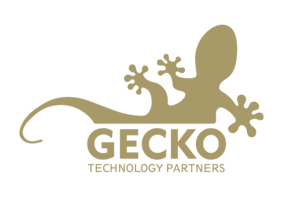Getting the most out of your hybrid meetings and ensuring everyone feels included can be a challenge. It doesn’t have to be.
Take a look at the tips we’ve compiled to make the hybrid meetings you host on Google Meet more inclusive. A hybrid meeting is one in which some participants are remote (e.g. at home, at a café) and others are together in a meeting room, perhaps at the office. It can be a challenge to cater to both virtual and in-person attendees equally but these tips will help you create an equitable experience for everyone joining your meeting.
We’ll guide you through best practices for before, during and after the meeting to ensure that they are productive and run smoothly and that every voice gets a chance to be heard.
Before the meeting

Ask guests to RSVP with location. Encourage guests to share whether they will attend “in a meeting room” or if they are “joining virtually” from the Google Calendar invitation so you know exactly what to expect.
Add attachments to the Google Calendar invitation. To ensure guests come prepared, attach any files that you plan to discuss – such as documents, spreadsheets or presentations – to the Calendar invitation beforehand. You can also attach a Google Docs meeting notes template that is pre-populated with the meeting details, including dedicated sections for taking notes and assigning action items.
Preconfigure host controls. Before the meeting begins, to avoid causing delays, you can: choose whether you want to allow participants to share their screen, send chat messages or reactions; assign co-hosts; and preconfigure breakout rooms. And you can update the settings during the call if needs change.
During the meeting

Leverage interactive Google Meet features. Encourage participants to use in-meeting chat, polls, Q&A, emoji reactions and hand-raising features to actively contribute and engage in the conversation, regardless of whether they are in the room.
Join with companion mode. Participants in a meeting room can also join the meeting from their personal device for equal access to polls, Q&A, screensharing, whiteboard and more. They can check in to be recognised by their own name, instead of the name of the conference room, and share their personal video feed so that remote participants can see them more clearly, fostering a more inclusive and collaborative meeting environment.
Dive deeper into Google Meet companion mode with our comprehensive guide.
Host an interactive whiteboarding session. Use digital whiteboarding apps Jamboard*, FigJam, Lucidspark or Miro in Meet to facilitate real-time collaboration sessions. Meeting room participants can also initiate a whiteboarding session directly from the Google Meet Series One Board 65 or Desk 27. For physical whiteboards in meeting spaces, consider using a whiteboard camera such as the Logitech Scribe; it captures and shares in-room whiteboard content right into the video meeting, making sure everyone can get a clear view of whiteboard annotations.
*The Jamboard app will be discontinued in September 2024. For long-term digital whiteboarding, plan to use FigJam, Lucidspark or Miro.

Encourage turning on captions. To enhance meeting accessibility and maintain focus for all participants, promote the use of captions. Captions contribute to better understanding and clarity, especially in instances where it may be difficult to hear the speaker. If you’re a mixed-language team, remind participants to use translated captions to minimise language barriers.
Record the meeting for later. Consider recording the meeting for those who were unable to attend or want to watch it back later. Remember to obtain consent from all participants and notify them before you start. You can also get a written record of the discussion through automatic meeting transcriptions.
Reduce distracting background noises. To help limit distractions during a meeting, participants can enable noise cancellation. Noise cancellation filters out background noises, such as typing, closing a door, or the sounds of a nearby construction site, allowing teams to remain focused. It is available on web, mobile and Google Meet Hardware devices for selected Google Workspace tiers. Meet also automatically adjusts the volume of each participant to level out loudness, ensuring everyone can be heard equally, at the same volume – no matter the device they’re joining from.

Customise the meeting view for a better experience. Participants can use multi-pinning on web, mobile and Google Meet Hardware for more control over the video feeds they see and to get a better view of people and content. Alternatively, participants who are presenting together but are in separate rooms can choose to pair their tiles, making it easier for everyone to follow along and stay engaged.
Make sure everyone can see you clearly. With the automatic lighting adjustment feature, Meet can detect and adjust underexposed video feeds to enhance your appearance. When joining a meeting from the web, or using a Google Meet Series One Desk 27 or Acer Chromebase for meetings (with plans to include more Google Meet Hardware in the future), make sure this feature is on so that you can be clearly seen during the call and minimise any distractions caused by poor video quality.
After the meeting
Share meeting materials. After the meeting, distribute any recordings, transcriptions and notes to make sure everyone has access to important information. You can share files via Drive, email, Chat or by attaching them to the original Google Calendar invitation.
Summary
Following these practices will improve the quality of your hybrid Google Meet calls and create an equitable meeting environment where every voice is valued
If you have any questions about the tips mentioned above or would like to discuss how your organisation can make the most out of Google Meet, drop us a line at info@GeckoTech.cloud.
Looking for a comprehensive guide on Google Meet companion mode? We’ve got you covered! Our dedicated blog post explores everything you need to know: how it works, what features are available and when you should consider using it.
